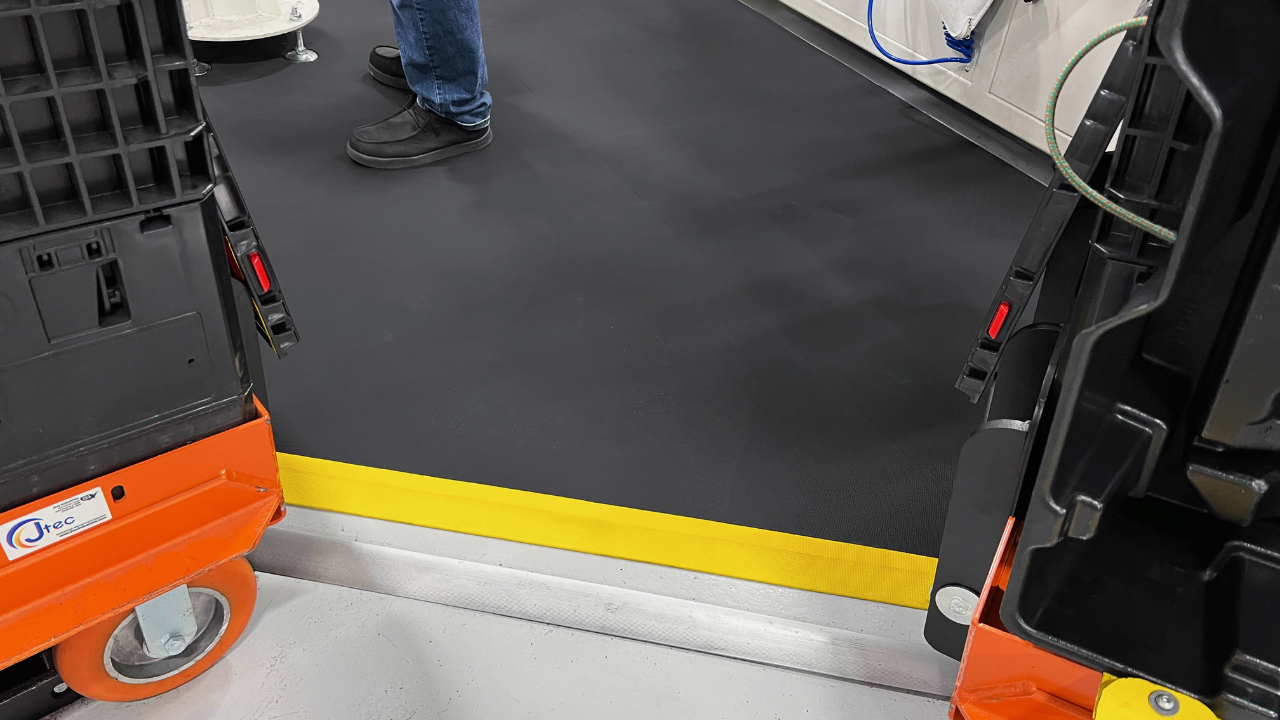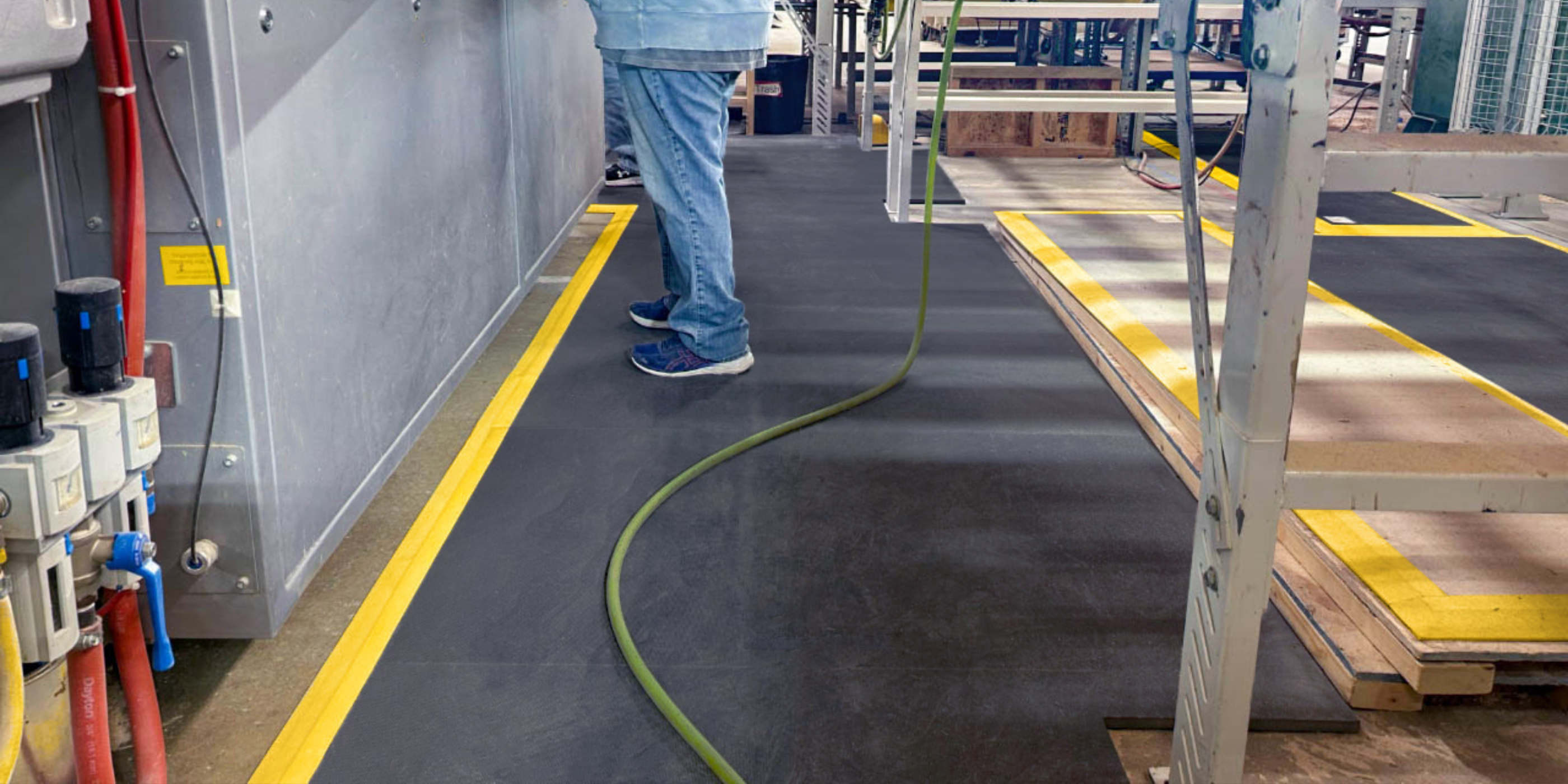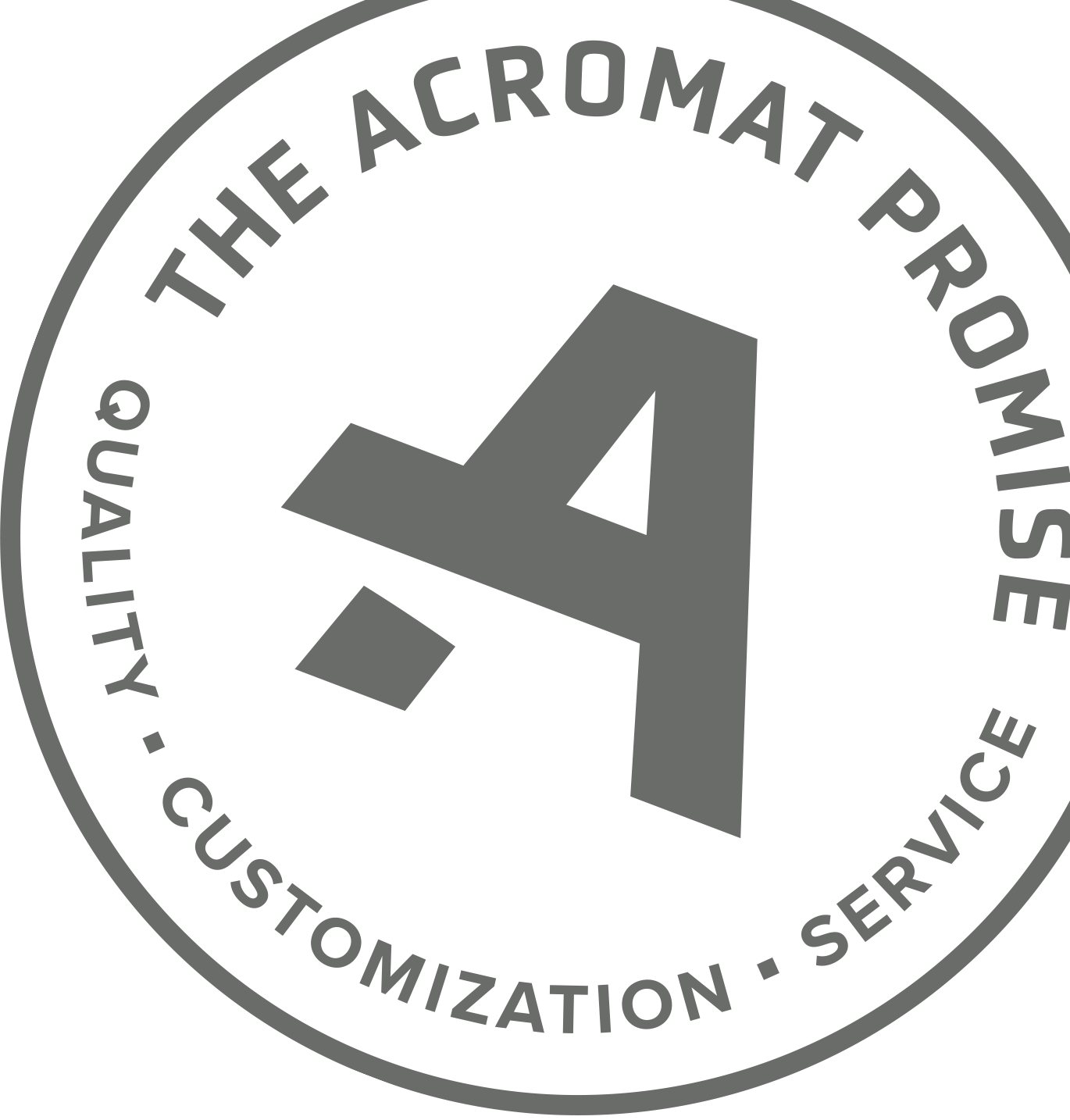Independent testing shows AcroMat 100-1 Series anti-fatigue mat seams maintain structural integrity after 4 years of accelerated aging and mechanical pull testing.
When it comes to the longevity of your anti-fatigue mats, seams are often the first point of failure. Over time, heat, moisture, and heavy use can cause seams to weaken or separate – leading to trip hazards, shorter product life, and constant re-purchases.
At AcroMat, we warranty seam integrity to ensure confidence in the performance of our products. To further validate this guarantee, we subjected our 100-1 Series anti-fatigue mat to third-party Seam Strength Testing. The results were decisive – After 4 years of aging and mechanical pull tests, our seams remained structurally sound with no end in sight.
Below, a look at the scientific testing process, key takeaways from the data, and how uncompromising seams elevate ROI for your company.
1. How AcroMat Mats Are Made
At AcroMat, we design and manufacture custom anti-fatigue mats to fit any layout; no shape or size limitations. We make our custom mats by precision-cutting and fusing together molded sheets of nitrile rubber. The bonding adhesive we use is the strongest product made – often used to repair industrial conveyor belts and semi-truck tires.
As there are slightly visible bonded seams along our anti-fatigue mats where the molded nitrile rubber sections and borders are fused together, you need to know with certainty the seams will remain structurally sound over years of heavy use, wear, and exposure.

Pictured: Custom 100-1 Series in use at a turbocharger manufacturing facility. The 100-1 Series mat is warrantied not to curl, lose its cushion, or come apart along the seams.
2. The Test: Simulating 4 Years of Use
The Organization: Independent testing conducted by CSA Group, a not-for-profit leader in North American Standards as well as Testing, Inspection and Certification – including 3,000+ published codes and standards. CSA Group is formally recognized and accredited by OSHA, AMECA, ANSI, ASSE, BSI, CEC, MSHA, EPA, IAS, MaP, NSAI, RVIA, and SCC.
The Goal: Evaluate how AcroMat’s 100-1 Series anti-fatigue mats, made from molded nitrile rubber, hold up to long-term environmental exposure and mechanical pull testing – specifically, whether the seams remain structurally sound and uncompromised.
The Test: Seam Strength Testing After Accelerated Aging. Twelve samples were placed in a controlled environmental chamber at 80°C and 80% relative humidity – replicating heat, chemical, and moisture exposure. This accelerated aging process is based on the Arrhenius Equation. At intervals representing 0, 1, 2, and 4 years of aging, the mats were then subjected to a mechanical pull test to determine seam strength.

CSA Group subjected the AcroMat 100-1 Series, made from molded nitrile rubber, to the Seam Strength Test. Our 100-ESD Series and 100-Cleanroom Series mats are made from the same material and construction process, indicating the data applies to all 100-Series mats.

Pictured: AcroMat 100-1 Series sample mounted (left) and undergoing mechanical pull testing (right). CSA Group tested 12 samples (4 in. by 8 in. each) with a bonded seam in the middle to ensure accurate results and an adequate sample size.
3. Results: AcroMat Seams Stronger After 4 Years
Across all aging conditions, the AcroMat 100-1 Series anti-fatigue mat samples maintained exceptional seam integrity after 4 years. In fact, according to the test results (table below), the seam strength grew stronger year over year during each mechanical pull test despite constant exposure to heat, chemicals, and moisture.

Results Summary: Over 4 years of accelerated aging, the seams along the AcroMat 100-1 Series anti-fatigue mats not only maintained their structural integrity but increased in strength from year 1 to year 4.
Average Force At Break (lbf or pounds per force):
The average force at break for the AcroMat 100-1 Series anti-fatigue mat increased from 0 years of aging (181 lbf) to 4 years of aging (187.9 lbf) – indicating continuous structural integrity and an increase in seam strength over time.
Average force at break, or tensile strength, measures the maximum stress or compressive load an anti-fatigue mat can withstand while being stretched before breaking. Specifically, the year 4 measurement of 187.9 lbf means CSA Group's machinery had to pull away from the seams with a constant force of 187.9 pounds before it gave way.
Average Elongation at Break (%):
The average elongation at break for the AcroMat 100-1 Series mat reached 202% or 3X its original shape after 4 years of aging – indicating an increase in seam strength over time.
Average elongation at break, or fraction strain, is used to determine how long a material can stretch before it snaps, breaks, or fractures. The percentage shows how much a fatigue material can be stretched or deformed from its original shape before it becomes unstable. Materials with a 3X, or 200%, average level of elongation have proven to withstand impacts and pressure better at a higher level than products measuring 100% and below.

From CSA Group Report: Mechanical pull-test in process, including how one of the 100-1 Series samples extended 217% (3X+) from its original size before the seam began to weaken.
Key Takeaway:
After 4 years of heavy use, including hundreds of pounds of force pulling, there was no measurable compromise or reduction in seam strength – an indicator that AcroMat's bonded seams resist degradation and even stabilize under sustained stress.

Pictured: This industrial manufacturer replaced modular tiles that were breaking apart at the seams with a single custom AcroMat anti-fatigue mat. The one-piece construction, glove-like fit, and seam strength warranty are providing fast-moving operators with peace of mind.
Related: 7 Reasons Companies Choose Anti-Fatigue Mats Over Modular Tiles
4. ROI: Why the Results Matter
Where poorly constructed, box-store mats and modular tiles often weaken and fall apart over time, AcroMat anti-fatigue mat seams have proven to remain fully bonded and intact through 4+ years of heavy use and chemical exposure – with no end in sight.
For your employees, this means:
- Consistent ergonomic support on all of your anti-fatigue mats
- No seam splitting under heavy foot traffic or equipment pressure
- Improved safety by eliminating trip hazards caused by seam failure
- Extended product lifespan and lower year over year spend (fewer re-purchases)
Our comprehensive performance warranty isn’t a promise we make lightly. It’s one we stand behind and validate with data.
View additional testing results:
AcroMat Outperforms Competitors by 3X in ASTM Fatigue Testing
AcroMat 100-1 Series Proves Zero Curl After Accelerated Aging



